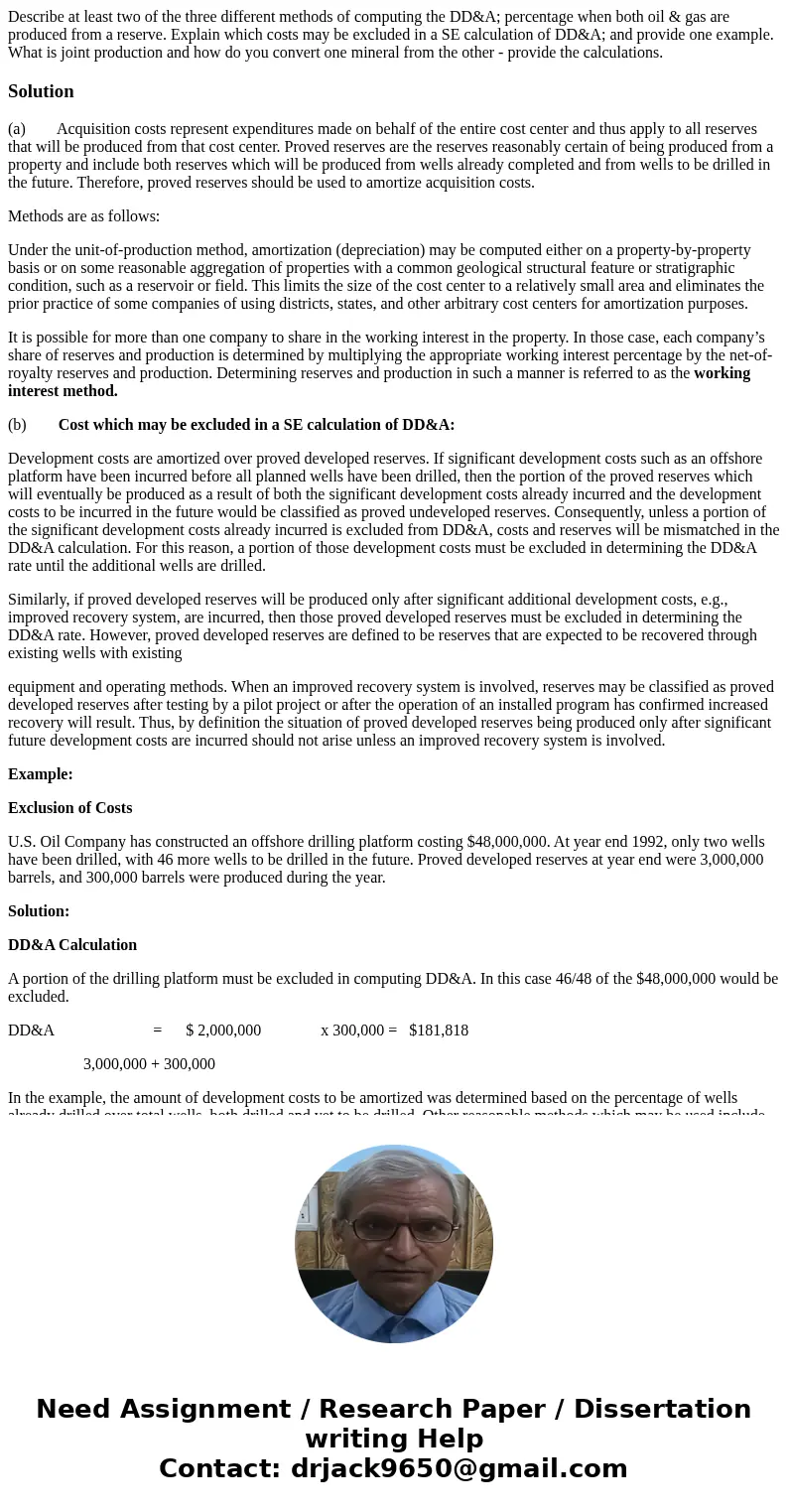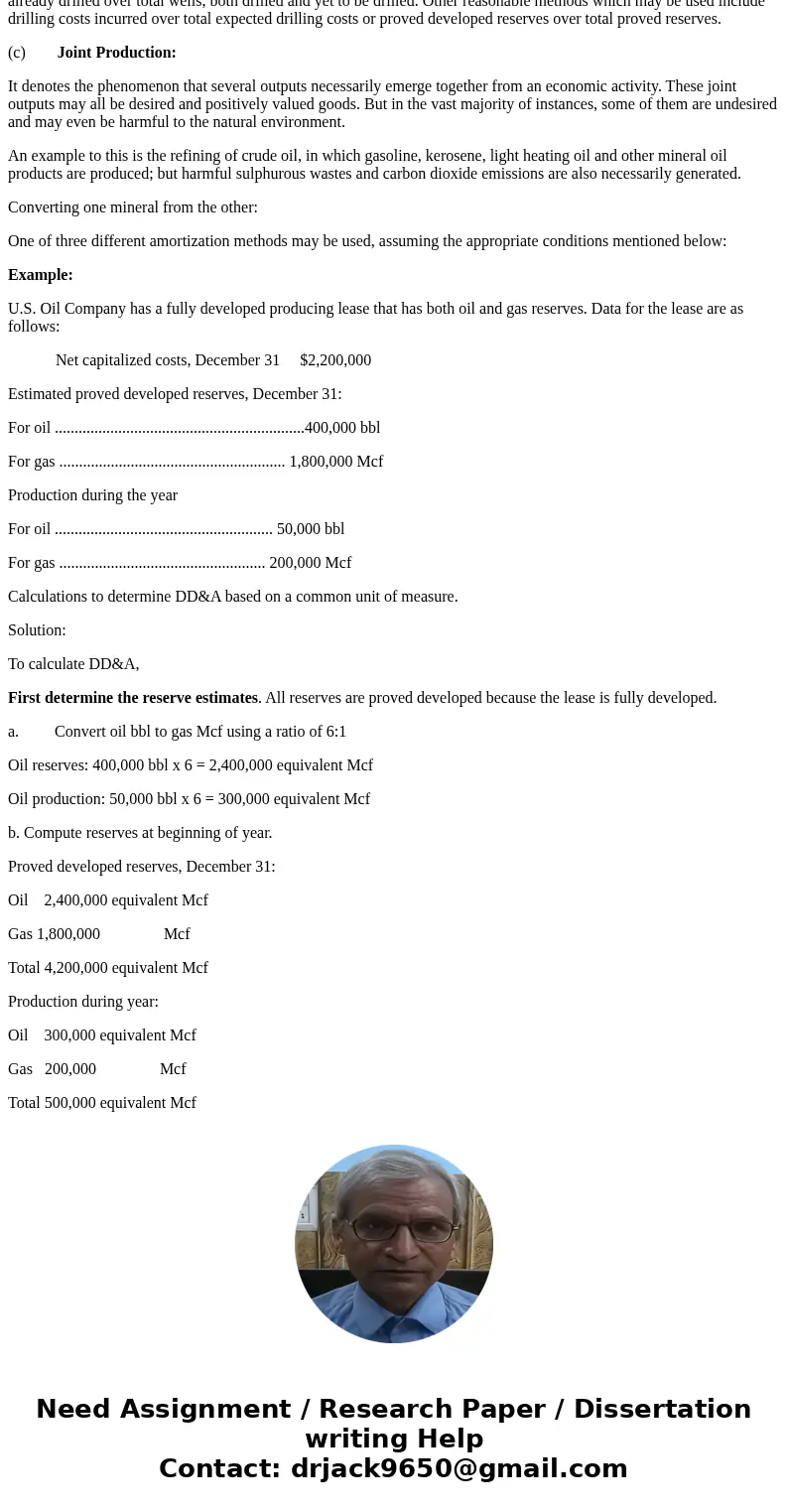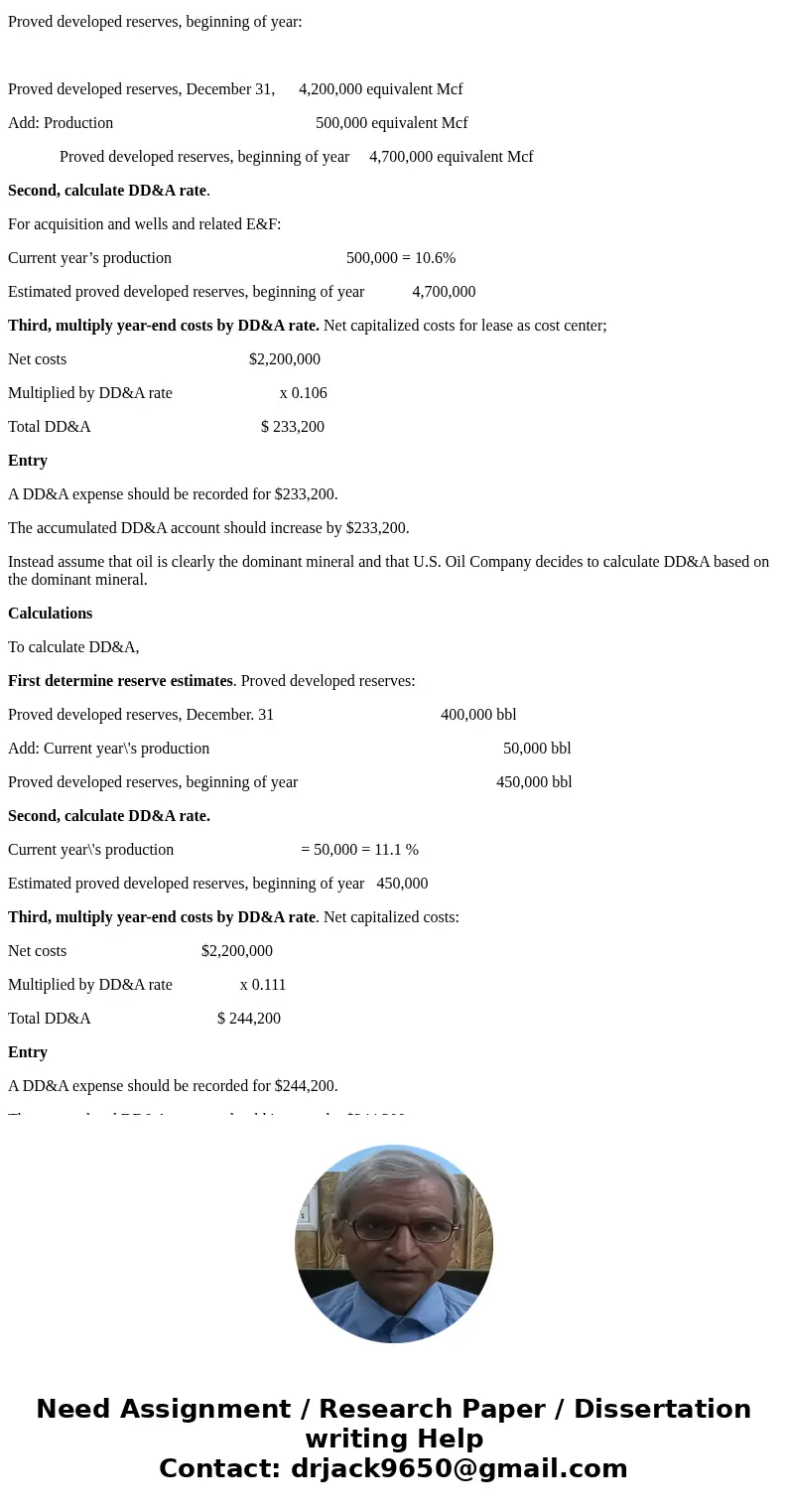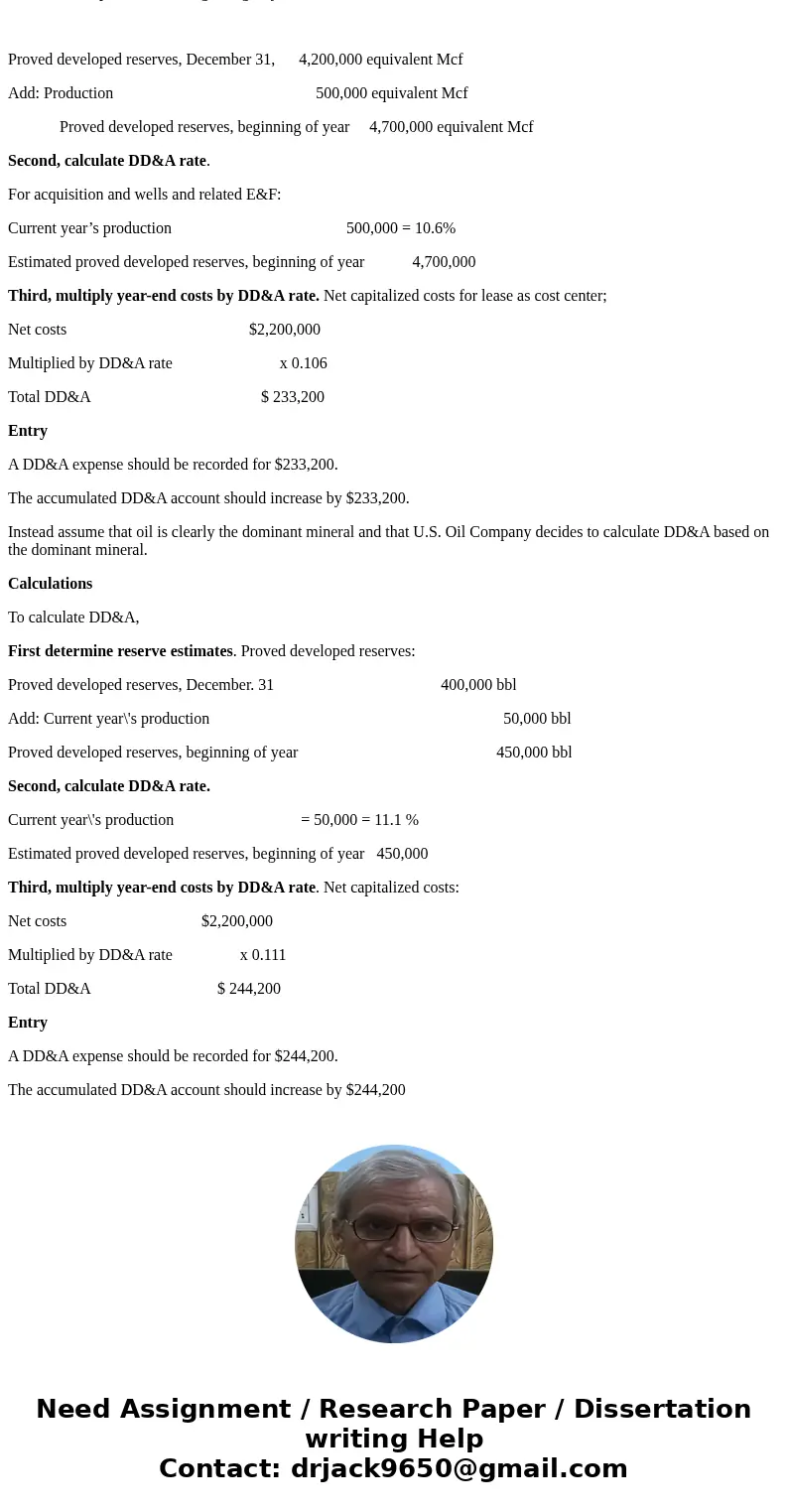Describe at least two of the three different methods of comp
Solution
(a) Acquisition costs represent expenditures made on behalf of the entire cost center and thus apply to all reserves that will be produced from that cost center. Proved reserves are the reserves reasonably certain of being produced from a property and include both reserves which will be produced from wells already completed and from wells to be drilled in the future. Therefore, proved reserves should be used to amortize acquisition costs.
Methods are as follows:
Under the unit-of-production method, amortization (depreciation) may be computed either on a property-by-property basis or on some reasonable aggregation of properties with a common geological structural feature or stratigraphic condition, such as a reservoir or field. This limits the size of the cost center to a relatively small area and eliminates the prior practice of some companies of using districts, states, and other arbitrary cost centers for amortization purposes.
It is possible for more than one company to share in the working interest in the property. In those case, each company’s share of reserves and production is determined by multiplying the appropriate working interest percentage by the net-of-royalty reserves and production. Determining reserves and production in such a manner is referred to as the working interest method.
(b) Cost which may be excluded in a SE calculation of DD&A:
Development costs are amortized over proved developed reserves. If significant development costs such as an offshore platform have been incurred before all planned wells have been drilled, then the portion of the proved reserves which will eventually be produced as a result of both the significant development costs already incurred and the development costs to be incurred in the future would be classified as proved undeveloped reserves. Consequently, unless a portion of the significant development costs already incurred is excluded from DD&A, costs and reserves will be mismatched in the DD&A calculation. For this reason, a portion of those development costs must be excluded in determining the DD&A rate until the additional wells are drilled.
Similarly, if proved developed reserves will be produced only after significant additional development costs, e.g., improved recovery system, are incurred, then those proved developed reserves must be excluded in determining the DD&A rate. However, proved developed reserves are defined to be reserves that are expected to be recovered through existing wells with existing
equipment and operating methods. When an improved recovery system is involved, reserves may be classified as proved developed reserves after testing by a pilot project or after the operation of an installed program has confirmed increased recovery will result. Thus, by definition the situation of proved developed reserves being produced only after significant future development costs are incurred should not arise unless an improved recovery system is involved.
Example:
Exclusion of Costs
U.S. Oil Company has constructed an offshore drilling platform costing $48,000,000. At year end 1992, only two wells have been drilled, with 46 more wells to be drilled in the future. Proved developed reserves at year end were 3,000,000 barrels, and 300,000 barrels were produced during the year.
Solution:
DD&A Calculation
A portion of the drilling platform must be excluded in computing DD&A. In this case 46/48 of the $48,000,000 would be excluded.
DD&A = $ 2,000,000 x 300,000 = $181,818
3,000,000 + 300,000
In the example, the amount of development costs to be amortized was determined based on the percentage of wells already drilled over total wells, both drilled and yet to be drilled. Other reasonable methods which may be used include drilling costs incurred over total expected drilling costs or proved developed reserves over total proved reserves.
(c) Joint Production:
It denotes the phenomenon that several outputs necessarily emerge together from an economic activity. These joint outputs may all be desired and positively valued goods. But in the vast majority of instances, some of them are undesired and may even be harmful to the natural environment.
An example to this is the refining of crude oil, in which gasoline, kerosene, light heating oil and other mineral oil products are produced; but harmful sulphurous wastes and carbon dioxide emissions are also necessarily generated.
Converting one mineral from the other:
One of three different amortization methods may be used, assuming the appropriate conditions mentioned below:
Example:
U.S. Oil Company has a fully developed producing lease that has both oil and gas reserves. Data for the lease are as follows:
Net capitalized costs, December 31 $2,200,000
Estimated proved developed reserves, December 31:
For oil ...............................................................400,000 bbl
For gas ......................................................... 1,800,000 Mcf
Production during the year
For oil ....................................................... 50,000 bbl
For gas .................................................... 200,000 Mcf
Calculations to determine DD&A based on a common unit of measure.
Solution:
To calculate DD&A,
First determine the reserve estimates. All reserves are proved developed because the lease is fully developed.
a. Convert oil bbl to gas Mcf using a ratio of 6:1
Oil reserves: 400,000 bbl x 6 = 2,400,000 equivalent Mcf
Oil production: 50,000 bbl x 6 = 300,000 equivalent Mcf
b. Compute reserves at beginning of year.
Proved developed reserves, December 31:
Oil 2,400,000 equivalent Mcf
Gas 1,800,000 Mcf
Total 4,200,000 equivalent Mcf
Production during year:
Oil 300,000 equivalent Mcf
Gas 200,000 Mcf
Total 500,000 equivalent Mcf
Proved developed reserves, beginning of year:
Proved developed reserves, December 31, 4,200,000 equivalent Mcf
Add: Production 500,000 equivalent Mcf
Proved developed reserves, beginning of year 4,700,000 equivalent Mcf
Second, calculate DD&A rate.
For acquisition and wells and related E&F:
Current year’s production 500,000 = 10.6%
Estimated proved developed reserves, beginning of year 4,700,000
Third, multiply year-end costs by DD&A rate. Net capitalized costs for lease as cost center;
Net costs $2,200,000
Multiplied by DD&A rate x 0.106
Total DD&A $ 233,200
Entry
A DD&A expense should be recorded for $233,200.
The accumulated DD&A account should increase by $233,200.
Instead assume that oil is clearly the dominant mineral and that U.S. Oil Company decides to calculate DD&A based on the dominant mineral.
Calculations
To calculate DD&A,
First determine reserve estimates. Proved developed reserves:
Proved developed reserves, December. 31 400,000 bbl
Add: Current year\'s production 50,000 bbl
Proved developed reserves, beginning of year 450,000 bbl
Second, calculate DD&A rate.
Current year\'s production = 50,000 = 11.1 %
Estimated proved developed reserves, beginning of year 450,000
Third, multiply year-end costs by DD&A rate. Net capitalized costs:
Net costs $2,200,000
Multiplied by DD&A rate x 0.111
Total DD&A $ 244,200
Entry
A DD&A expense should be recorded for $244,200.
The accumulated DD&A account should increase by $244,200




 Homework Sourse
Homework Sourse